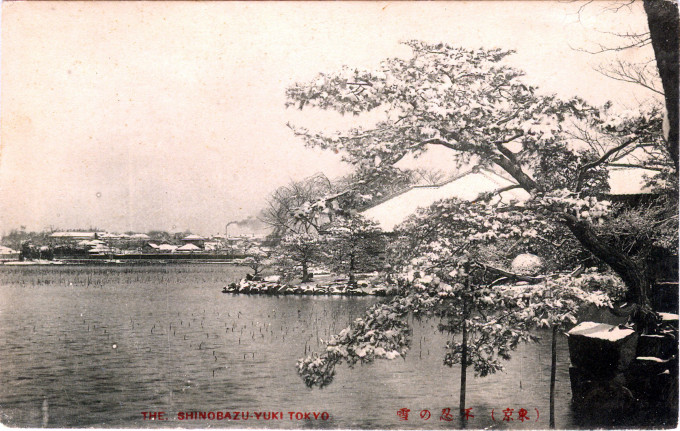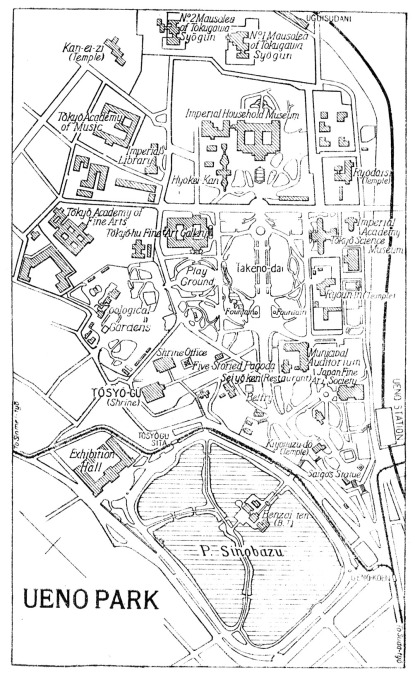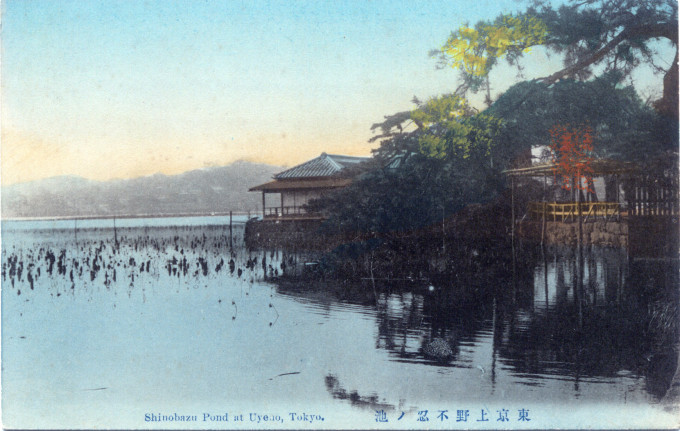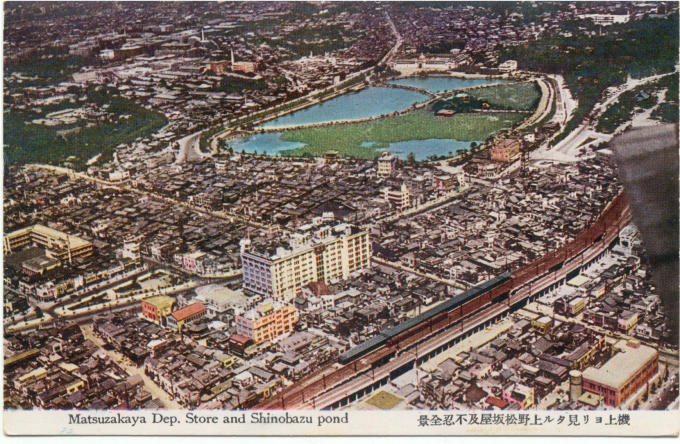See also:
Lotus Blossom at Shinobazu Pond, c. 1910
“Then there descends a black cloud from the sky, and the water from the sea, as a reversed waterfall, rises whirling about and joins the cloud. Tradition says that a dragon passes from the water into the cloud … On considering the fact that a dragon rose from Shinobazu Pond we arrive at the conclusion that dragons lie at the bottom of even small ponds and that the water, according to the weather, rises and a cloud comes down, so that heaven and earth come into connection and the dragon can ascend to the sky.”
– Jinchodan, Ogawa Kendo, 1814
From the wiki: “The Shinobazu Pond (Shinobazu ike) is within Ueno Park, and a historically prominent Shitamachi feature often appearing in history and works of art. The park occupies the site of the former Kan’ei-ji, a temple closely associated with the Tokugawa shoguns, who had built it to guard Edo Castle against the northeast, a direction believed to be unlucky by traditional geomancy. The temple was destroyed during the Boshin War (1868-18769). The pond, although modified many times and even once drained, is natural.
“In the Jōmon period (~12,000 BCE) the entire place used to be just a cove of Tokyo Bay. Later, some centuries into the Common Era, the sea withdrew, leaving behind extensive marshes that covered most of the old Shitamachi. The pond is what remains of those marshes, and marks an annual stop for thousands of migrating birds.
“The pond’s shape until the beginning of the Meiji Era was very different from now, in particular the northern part where the Ueno Zoo is, which was much wider. At the time, the Aizomegawa flowed into it. In 1884 however, a cooperative horse racing company, wanting to open a racing track, had the pond partly filled, bringing it to the present shape and size. The first horse race took place in the November of the same year in the presence of the Emperor, and until 1892 races took place every spring and summer.
“In 1907 the Kangetsukyō Bridge was built toward the west in occasion of the Tokyo Industrial Fair, making it possible to walk across the whole pond. In 1929 more work divided the pond in four distinct parts. The boat rental business, which continues to the present day, was started in 1939. Today’s Cormorants Pond is the result of the fusion of two of those four sections.
“During World War II water was pumped out and the pond divided into rice paddies (the so-called Shinobazu Tanpo [rice paddy garden]). There was later, among others, a plan to build a baseball field on it, but in 1949 it was decided to return the pond to its original form which we still see today.”







Pingback: Lotus Flower at Shinobazu Pond, Ueno, c. 1910. | Old Tokyo
Pingback: Ueno Park, c. 1910. | Old Tokyo
Pingback: Meiji (Tokyo) Industrial Exhibition, Ueno Park, 1907. | Old Tokyo